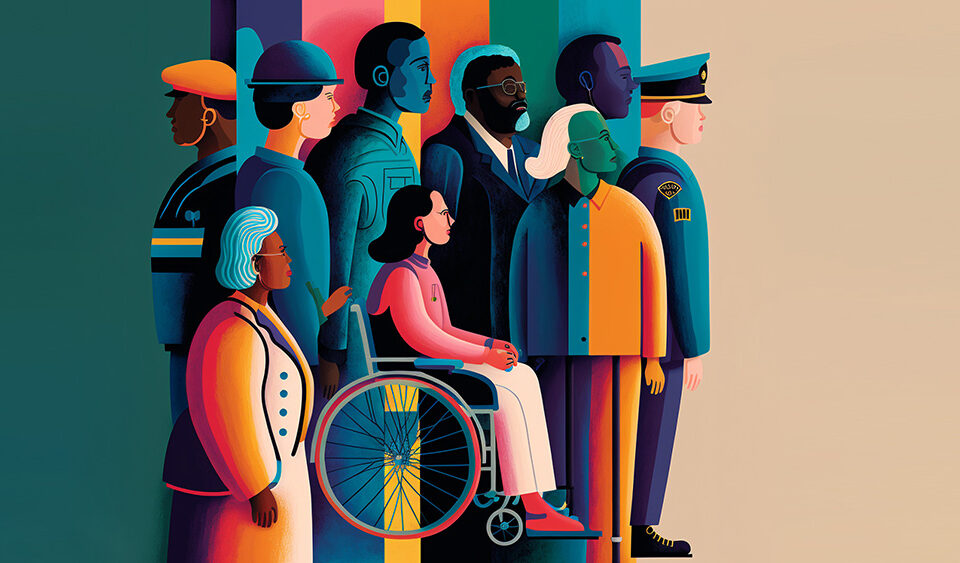
Think of your DEI roadmap as the Maps of building an inclusive workplace. It’s not just a bunch of fingers pointing in the right direction; it’s the step-by-step journey to creating an environment where everyone, regardless of their background, feels valued and heard.
So, what’s inside this magical map?
Well, it’s an ever evolving blueprint that covers everything from hiring practices to ongoing training, leadership development, and even the everyday interactions that make or break a workplace vibe. It’s not a one-size-fits-all affair; rather, it’s a tailored strategy that considers the unique needs, experiences, and aspirations of your diverse workforce.
In essence, a DEI roadmap is your company’s commitment to weaving inclusivity into the very fabric of its DNA. It’s not just about ticking boxes; it’s about creating a workplace symphony where every instrument plays in harmony, and no one feels like they’re singing a solo in the dark.
What are the 5 stages of the DEI journey at work?
From tentative first steps to confident leaps, here’s the roadmap to turning your office into a haven of diversity, equity, and inclusion:
1. Initial awareness: At the onset of the DEI journey, an organisation experiences a paradigm shift—an awakening to the intrinsic value of diversity and inclusion.
This stage is characterised by the cultivation of awareness across all organisational strata. It necessitates initiating structured conversations and workshops aimed at fostering a full sense of collective understanding that transcends diversity as a mere organisational concept.
2. Assessment phase: Subsequently, an organisation embarks on an evaluative expedition to ascertain its current standing regarding inclusivity. Rigorous assessments of extant policies, practices, and corporate culture are conducted.
This stage is marked by a meticulous examination, unearthing latent biases, identifying areas necessitating enhancement, and comprehending the distinct challenges and barriers faced by the workforce.
3. Strategic formulation: Armed with insights gleaned from the assessment, organisations progress to the formulation of a comprehensive DEI strategy. This entails the delineation of explicit objectives, the establishment of measurable goals, and the crafting of an actionable plan.
The strategy is bespoke, aligning with the company or organisation’s mission and ethos and accommodating the unique exigencies of its workforce.
4. Implementation stage: With the strategy crystallised, the organisation transitions to the implementation phase, effecting changes across diverse facets such as recruitment procedures, training regimens, leadership development initiatives, and daily operational protocols.
This stage is a transformative process, requiring active involvement from all stakeholders to bring the strategic vision to fruition.
What is a DEI plan at work?
- Define clear objectives: Establish clear and measurable DEI objectives aligned with your organisational goals. These could include improving diversity in hiring, more inclusion efforts addressing pay gaps, and fostering an inclusive company culture.
- Involve your team: Cultivate a culture of inclusivity by involving your team in the initiative. Seek out diverse backgrounds and perspectives, encourage open dialogue, and make everyone feel a part of the transformation.
- Training and awareness: Implement comprehensive training programs to raise awareness about unconscious biases, cultural competence, and the significance of an inclusive workplace.
- Revise hiring practices: Review and revise your hiring practices to eliminate biases. Ensure that your recruitment processes are designed to attract a diverse pool of candidates.
- Leadership commitment: Demonstrate unwavering commitment from industry leaders from the top down. Leaders must actively champion DEI efforts, setting the tone for the entire organisation.
- Establish accountability: Integrate DEI metrics into performance evaluations and hold senior leaders accountable for fostering an inclusive environment.
- Create safe spaces: Foster open communication by creating safe spaces for employees to discuss DEI issues. Encourage feedback and act upon it to drive meaningful change.
- Regular evaluation and adjustment: Continuously assess the effectiveness of your DEI initiatives. Regularly gather feedback, measure progress against objectives, and be prepared to adjust strategies accordingly.
- Community engagement: Extend your DEI efforts beyond the workplace. Engage with diverse communities, support initiatives, and participate in industry-wide conversations on inclusivity.
Some simple ways to create a DEI roadmap is to evaluate what gaps need to be filled in your drive towards equality. They have to be actionable, measurable and must cover specific areas of a company’s business.
- Hiring: companies can set their hiring goals by aiming to increase the number of Persons with disability in their workforce. This is an actionable item that teams can strive to achieve.
- Partnerships: organisations can strive to include DEI in their approach to partnerships and relationships. A company can decide to diversify their supplier pool. By including businesses owned by different people of colour, ethnicity and people living with disabilities.
- Communities: Big corps as part of their CSR can support social justice causes by lending their voices and influence in the community to issues affecting minority or disadvantaged groups. This takes CSR beyond Friday barbecues and weekly trash disposal, it takes CSR into a new realm of impactful responsibility.
- Communication and education: companies dole out marketing messages constantly to keep their brands visible. As part of the company’s roadmap for a period could be to increase education on the importance of equality by 40% through community/employee engagement by whatever Mass media means.
- Visibility: the key component of a DEI roadmap is visibility. Companies need to collate and display their progress for the world to see. This improves employee morale in better positions in a company for better talents.
Diversity, Equity, and Inclusion (DEI) initiatives are not mere checkboxes but essential components of fostering a thriving workplace culture. From crafting a strategic DEI roadmap to leveraging specialised DEI software, organisations embark on a transformative journey.
Leadership commitment, data-driven assessments, inclusive hiring practices, comprehensive training, transparent reporting, and employee engagement are the pillars of successful DEI implementation.
As workplaces evolve, embracing diversity becomes not just a moral imperative but a strategic advantage. The commitment to DEI is not only about attracting talent but also about cultivating an environment where every individual feels valued and heard.
In weaving diversity and inclusion into the fabric of organisational DNA, businesses not only reflect societal values but also ensure sustained business success in an ever-changing global landscape.


